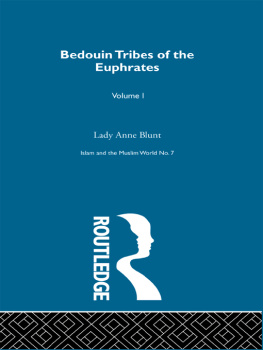
This edition is published by PICKLE PARTNERS PUBLISHINGwww.picklepartnerspublishing.com
To join our mailing list for new titles or for issues with our books picklepublishing@gmail.com
Or on Facebook
Text originally published in 1988 under the same title.
Pickle Partners Publishing 2015, all rights reserved. No part of this publication may be reproduced, stored in a retrieval system or transmitted by any means, electrical, mechanical or otherwise without the written permission of the copyright holder.
Publishers Note
Although in most cases we have retained the Authors original spelling and grammar to authentically reproduce the work of the Author and the original intent of such material, some additional notes and clarifications have been added for the modern readers benefit.
We have also made every effort to include all maps and illustrations of the original edition the limitations of formatting do not allow of including larger maps, we will upload as many of these maps as possible
DESERT GUERRILLAS: Psychological, Social And Economic Characteristics Of The Bedouin Which Lend Themselves To Irregular Warfare
By
MAJ Thomas A. Dempsey, USA
TABLE OF CONTENTS
Contents
TABLE OF CONTENTS
REQUEST FROM THE PUBLISHER
ABSTRACT
This monograph addresses the suitability of Bedouin tribes for recruitment and employment as irregular forces. The study is motivated by force shortfalls and resource constraints in U.S. contingency planning for Southwest Asia and the Arabian Peninsula. A partial solution to these shortfalls and constraints is offered through the employment of Bedouin irregular forces to augment U.S. contingency operations in the area.
The study examines the characteristics of Bedouin society and finds that those characteristics support the recruitment and employment of Bedouin irregular forces. Three historical case studies support this conclusion, demonstrating the effectiveness of Bedouin irregulars. The case studies analyze the use of Bedouin irregular forces in the unification of Saudi Arabia prior to the First World War; under T. E. Lawrence during his campaigns in the Hejaz and Palestine from 1916 to 1918; and during the Dhofar Rebellion in Oman from 1971 to 1976.
The monograph concludes that the Bedouin population of the Levant and the Arabian Peninsula constitutes a critical resource, which could be exploited to provide irregular forces in support of U.S. operations in Southwest Asia and the Arabian Peninsula. Some suggestions are offered with respect to methods of employment for such forces. The paper closes with a review of issues requiring further study, including the need for a doctrine addressing irregular warfare, and for techniques to implement that doctrine.
I. Introduction
This paper will examine those characteristics which enable Bedouin tribes to provide irregular forces to augment conventional and unconventional military operations in Southwest Asia and the Arabian Peninsula. It will also consider how a U.S. contingency force could exploit these factors to its own advantage. While the study is limited to Southwest Asia and the Arabian Peninsula, the influence of the local population in any theater of operations should be considered in contingency planning and execution.
While irregular forces have been utilized frequently in past military conflicts, they achieved special prominence during Allenbys Palestine Campaign under the leadership of T. E. Lawrence. Beginning as an economy of force effort to tie down Turkish garrisons in the Hejaz, the irregular forces of the Arab Revolt played a key role under Lawrence in Allenbys final offensive in September of 1918 {1} . Their successes in cutting Turkish communications and in pursuing the withdrawing Turkish forces demonstrated the potential of irregular forces when employed in a suitable role in the appropriate circumstances {2} . This potential merits careful consideration in light of current U.S. contingency planning for the Arabian Peninsula and Southwest Asia.
Current shortfalls within the U. S. Central Command (USCENTCOM) force structure and resource constraints within its Area of Responsibility (AOR) point to a vital need for augmentation, which irregular forces may partially satisfy. During the initial phases of a contingency, USCENTCOM will be operating with very austere forces in an immature theater. Three to four weeks are required to move three combat divisions to the Arabian Gulf; considerably longer to provide the sustainment base in theater necessary for their employment {3} . The primary contingencies portray most, if not all, combat and combat support units as being employed against a Soviet threat projected from the North Caucasus, Transcaucasus and Turkistan Military Districts {4} . Should a threat develop to the critical air bases or theater army support facilities which would be located in the Arabian Peninsula, assets available for commitment in this area will be meager. Irregular Bedouin forces, locally recruited and employed to detect and help counter the rear area threat, can act as a force multiplier for the USCENTCOM rear battle. In addition to this rear battle role, Bedouin irregulars may, in the appropriate circumstances, provide critical additional combat forces at times and places where employment of regular U.S. or host nation units is difficult or not feasible.
II. Irregular Forces and Their Employment
For purposes of this paper, irregular forces are defined as forces locally recruited in the AOR, but not part of an organized national military unit trained for conventional operations. The latter point distinguishes the employment of locally recruited irregulars from combined operations with the national forces of an ally or host nation.
Irregular forces have been employed historically in four distinct ways: for intelligence gathering, in security operations, in raiding, and rarely (under Lawrence in Palestine, for example) for deep operations as part of a conventional campaign. Each of the four methods of employment exploited certain characteristics of irregulars. These characteristics provided advantages over the regular units available, or enhanced their effectiveness.
The U.S. Army routinely recruited American Indians to gather intelligence as scouts during the Indian Wars. General George Crook stated that I always try to get Indian scouts, because with them scouting is the business of their lives. They learn all the signs of a trail as a child learns the alphabet; it becomes an instinct. {5} General Crook realized that irregular forces operating in their home territory possess a detailed knowledge of the area which is invaluable to the intelligence collection effort. Irregular forces can also provide key contacts with the local population, as Vladimir Peniakoff discovered in setting up a British intelligence network in North Africa in 1942. Employing local Arab irregulars, his network extended from Alexandria to Benghazi, providing detailed information on Axis order of battle, movement and logistics {6} . Peniakoff found that irregular forces drawn from the local area typically maintain their contacts and acquaintances among the local communities. The irregulars are privy as a matter of course to the rumors, news, and observations of the local people, yielding critical information which would not otherwise be available.








